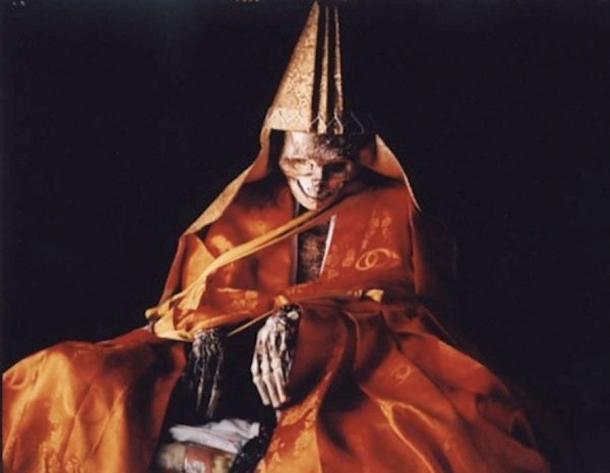Buddhist Monks Self-Mummified Their Bodies While Still Alive
Over 1,000 years ago, an esoteric sect known as Shingon – which combined elements from Buddhism, Old Shinto, Taoism, and other religions – developed a horrifying practice of self-mummification of the living body. The goal was to demonstrate the ultimate act of religious discipline and dedication.
The practice, known as Sokushinbutsu, was pioneered by a Japanese priest named Kukai, and involved drying out the body over a number of years through a gruelling process, which inevitably resulted in death and preservation of the body.

A monk that achieved self-mummification (atlasobscura.com)
The steps involved in mummifying one’s own body were extremely rigorous and painful. For the first 1,000 days, the monks ceased all food except nuts, seeds, fruits and berries and they engaged in extensive physical activity to strip themselves of all body fat.
For the next one thousand days, their diet was restricted to just bark and roots. Near the end of this period, they would drink poisonous tea made from the sap of the Urushi tree, which caused vomiting and a rapid loss of body fluids. It also acted as a preservative and killed off maggots and bacteria that would cause the body to decay after death.
- Sokushinbutsu: Tales Of Living Buddhas’ Self Mummification
- Dying to Live Forever: The Reasons behind Self-Mummification
In the final stage, after more than six years of torturous preparation, the monk would lock himself in a stone tomb barely larger than his body, where he would go into a state of meditation. He was seated in the lotus position, a position he would not move from until he died. A small air tube provided oxygen to the tomb. Each day, the monk rang a bell to let the outside world know he was still alive. When the bell stopped ringing, the tube was removed, and the tomb sealed for the final thousand day period of the ritual.
At the end of this period, the tomb would be opened to see if the monk was successful in mummifying himself. If the body was found in a preserved state, the monk was raised to the status of Buddha, his body was removed from the tomb, and he was placed in a temple where he was worshiped and revered.
The practice of self-mummification continued until the 19th century, when it was banned by the Japanese government. It is believed that many hundreds of monks attempted sokushinbutsu, but only 28 are known to have achieved mummification, many of whom can be visited in various temples in Japan.
Top image: The body of the Thai Buddhist monk Luang Pho Daeng at Wat Khunaram, Ko Samui, Thailand (Source: escape.com.au)
By Joanna Gillan




















Comments
While I admire the commitment, I can’t say I fully underdstand the reasoning. That said, how could the temple allow someone to put sunglasses on such a venerated shrine?
I get it now! You’re gauging our gullibility.
Nobody gets paid to tell the truth.